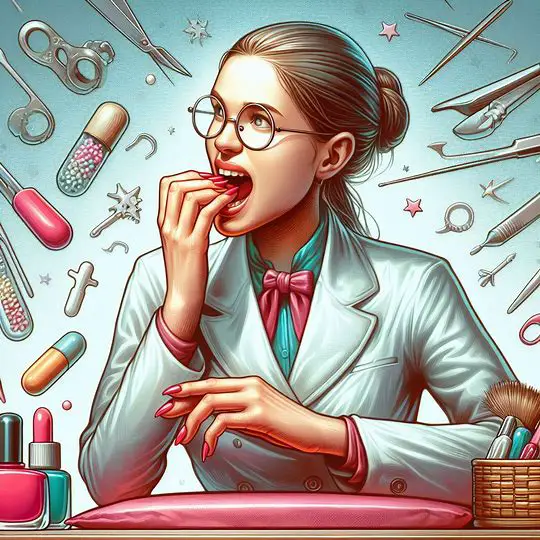Overcome nail biting with our expert tips and strategies. Discover how to break the cycle of this common habit and achieve healthier nails and hands.
Table of Contents
Introduction – Nail biting
Nail biting, or onychophagia, is a common oral compulsive habit where individuals bite their fingernails or surrounding tissue. This behavior can be more than a bad habit; it can serve as a physical manifestation of emotional or mental health issues such as stress, anxiety, or boredom. Onychophagia affects people of all ages and backgrounds, and while often beginning in childhood, it can persist into adulthood without proper intervention or awareness of underlying causes.
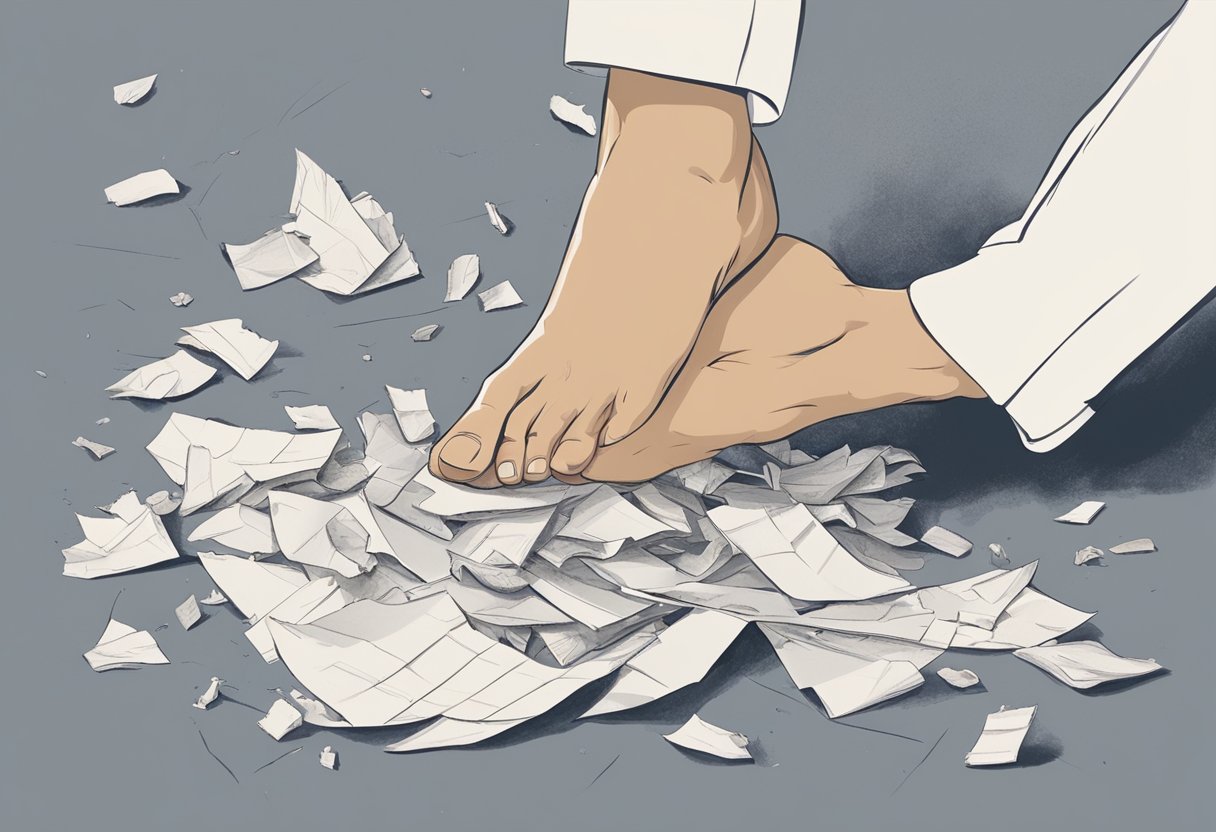
Although frequently dismissed as a minor concern, chronic nail biting can lead to various complications, including dental issues, infections, and damaged skin. The behavior may also have social and psychological repercussions, impacting an individual’s self-esteem and social interactions. Understanding the root causes and triggers is crucial for developing effective treatment and prevention strategies. Therapy methods, including Cognitive Behavioral Therapy (CBT), self-care techniques, and sometimes medication, show promise in helping individuals overcome this compulsion.
Key Takeaways
- Nail biting is often related to emotional stress and can indicate underlying mental health conditions.
- Chronic onychophagia can cause physical harm and social discomfort.
- Effective treatments are available, combining psychological therapy with self-care strategies.
Understanding Nail Biting
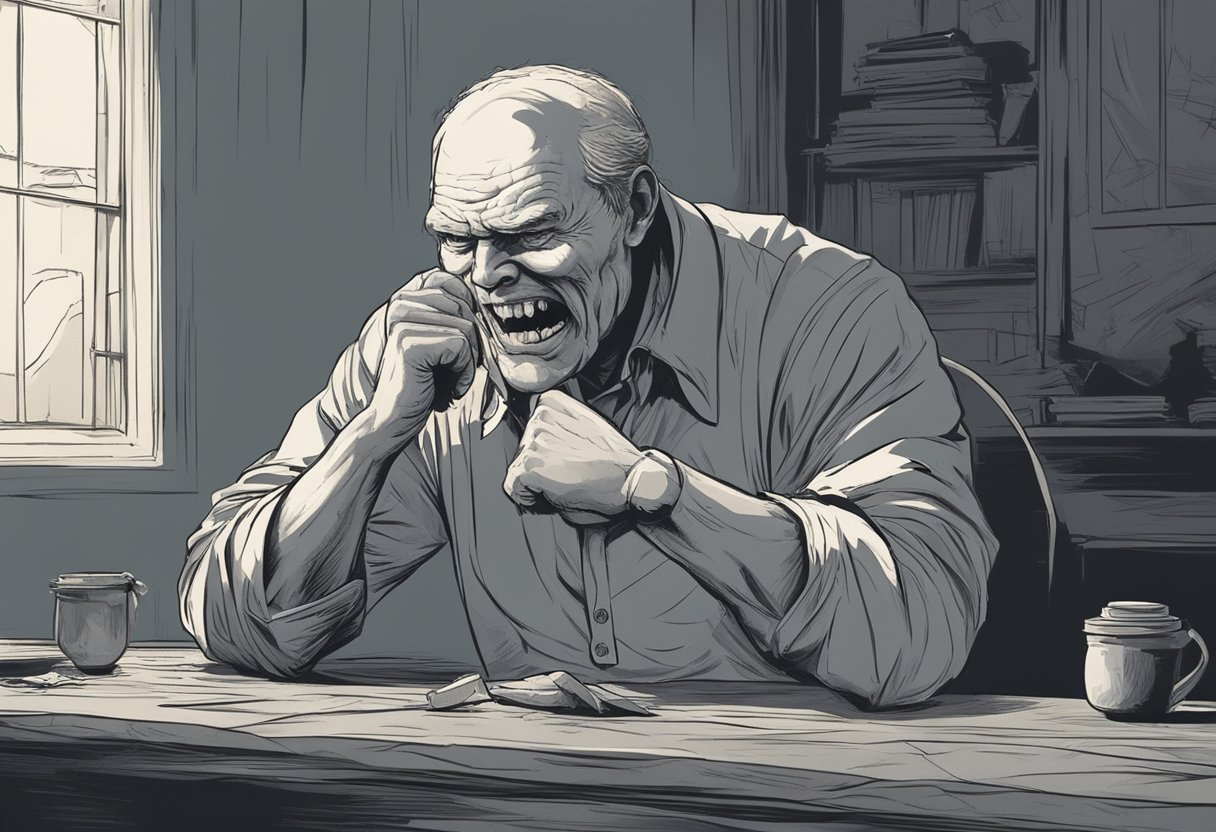
Nail biting is a common yet complex behavior that stems from psychological foundations and manifests across various demographics.
Psychological Aspects
Nail biting, clinically referred to as onychophagia, is typically considered body-focused repetitive behavior. Psychological factors such as anxiety, stress, and certain mental health conditions can serve as triggers or causes for this habit. It is associated with various psychological conditions, including obsessive-compulsive disorder (OCD) and emotional issues, and is believed to be a stress-relieving habit. Research has also connected nail biting to other disorders like oppositional defiant disorder and attention deficit hyperactivity disorder.
| Key Psychological Aspects | Related Conditions |
|---|---|
| Stress-relieving habit | Anxiety, Stress |
| Behavior manifestation | Obsessive-Compulsive Disorder (OCD) |
| Coping Mechanism | Oppositional Defiant Disorder, ADHD |
(Source: Verywell Health)
Demographics and Development
Nail biting primarily develops during childhood or adolescence, with studies indicating that up to a third of children engage in this habit at some point. This behavior can persist into adulthood, especially when linked to psychiatric disorders. While it is not classified in the DSM-5 as a disorder on its own, it is acknowledged as a symptom of broader psychiatric conditions.
| Demographics and Development | Age Group | Connection to Disorders |
|---|---|---|
| Prevalence in Early Age | Childhood, Adolescence | Psychiatric Disorders, Separation Anxiety Disorder |
| Persisting into Adulthood | Adults | Mental Health Conditions |
(Source: Mind Help)
Bold and italics highlight the key entities and related terms throughout the table of contents to aid reader comprehension.
Health Implications
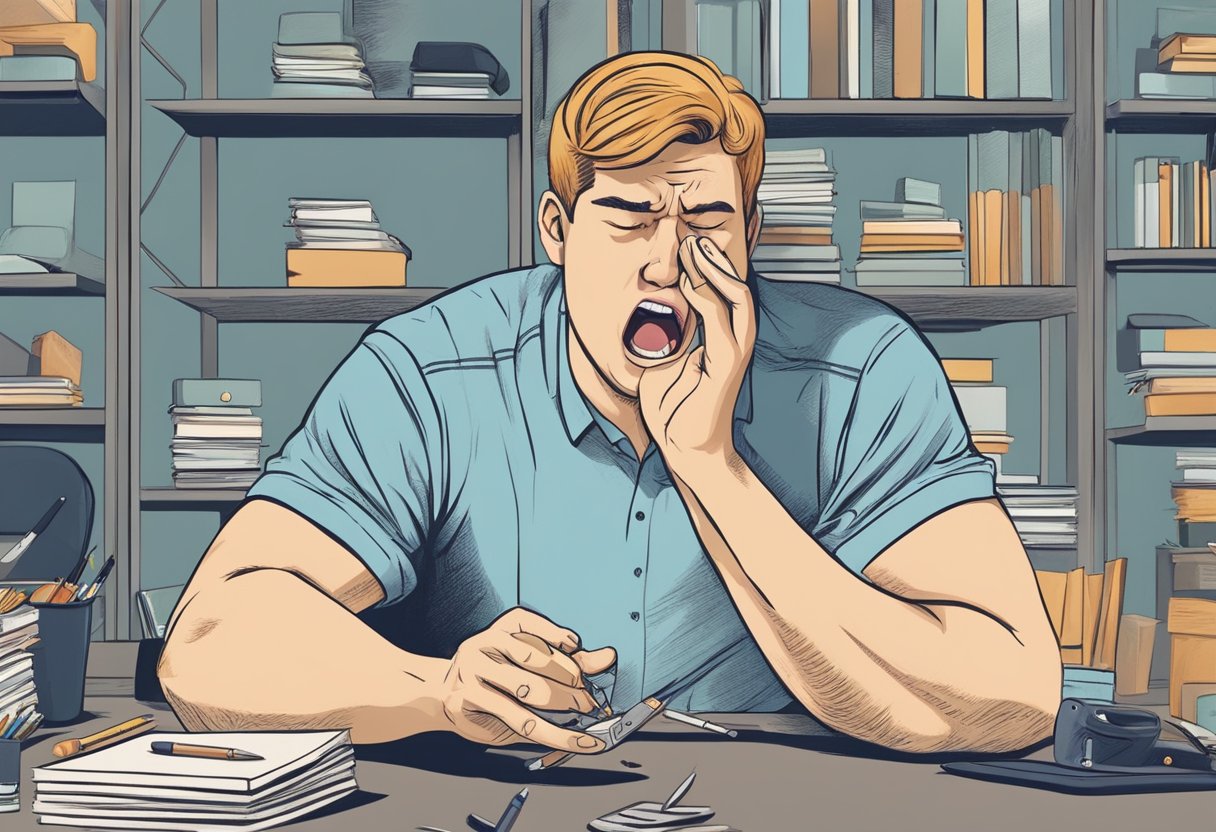
Nail biting can lead to several health concerns, ranging from local infections to broader dental health issues. While often dismissed as merely a bad habit, this behavior can have tangible and harmful effects on one’s health.
Potential Infections and Complications
Compulsive nail biting heightens the risk of introducing bacteria and fungal infections into the body, which can manifest in various infections. The soft tissue around the nails can become sore and vulnerable to skin infections. Indeed, habitual nail biting provides a pathway for harmful bacteria like salmonella and cold-causing viruses to enter the body, leading to illness. Furthermore, the physical damage to the cuticle and surrounding skin can result in painful hangnails and chronic conditions when not adequately addressed.
| Key Findings | Sources |
|---|---|
| Introduces bacteria like salmonella and cold viruses to the body | Harvard Health |
| Causes skin around the nails to become sore and vulnerable to infection | Health.com |
Nail and Skin Damage
Chronic nail biting can lead to deformed nails and inhibited nail growth. Continuous biting creates ragged edges and may damage the nail bed, crucial for normal nail growth. Severe cases can expose the nail bed, increasing the risk of further infections. Moreover, chronic nail biting can permanently damage the nails and skin, including conditions such as ingrown nails.
| Key Findings | Sources |
|---|---|
| Can deform nails and inhibit nail growth | eMediHealth |
| May cause permanent damage to nails and skin | UCLA Health |
Effects on Dental Health
The implications of nail-biting extend to one’s dental health. The habit can cause misalignment of teeth and even lead to chipped teeth. Repetitive biting applies undue stress on teeth, which may result in dental problems. In addition, individuals who bite their nails could also face issues with their jaw, including pain and discomfort due to the constant gnawing and chewing action.
| Key Findings | Sources |
|---|---|
| Causes misalignment and chipping of teeth | UCLA Health |
| Can result in jaw pain and dental issues | Verywell Health |
Treatment and Prevention Strategies
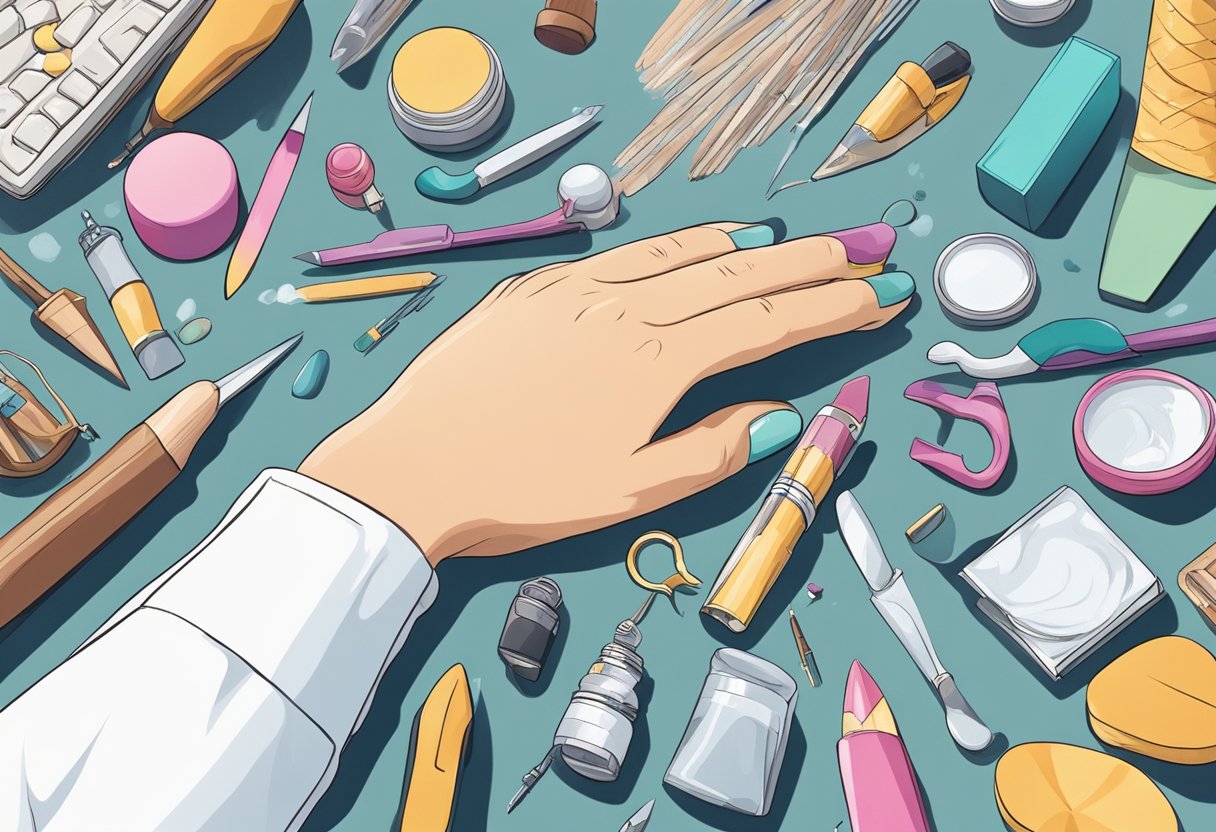
To combat nail biting, a multifaceted approach can be effective — involving behavioral interventions, physical barriers, and medical approaches when necessary.
Behavioral Interventions
Behavioral therapy, specifically cognitive behavioral therapy (CBT), is a reliable method for treating nail biting. Habit-reversal training, a component of CBT, teaches individuals to recognize triggers and replace nail biting with a less harmful action. In some cases, relaxation techniques might also be integrated to help reduce the impulse to bite.
| Key Technique | Description |
|---|---|
| CBT | A type of psychotherapy that helps modify negative behaviors by changing thought patterns. |
| Habit-reversal training | A method to recognize cues and engage in a competing response instead of nail biting. |
For more detailed information on behavioral interventions, they can consult a mental health provider.
Physical Barriers and Aids
Physical barriers such as gloves, stickers, or tape can prevent biting by creating a literal barrier. Regular manicures might also deter biting by keeping the nails too short and neat to bite and by introducing pride in the appearance of one’s nails.
| Physical Barrier | Purpose |
|---|---|
| Gloves | To cover the nails and hinder access. |
| Manicures | To maintain short nails and reduce the biting urge. |
Regarding using deterrents like bitter-tasting nail polish, please consult sources like American Academy of Dermatology.
Medical Approaches
Medication might be warranted in certain instances if the nail biting is severe and associated with psychological conditions. A medical treatment plan should be developed with a healthcare provider, who might prescribe medication to alleviate symptoms of anxiety or other underlying conditions that contribute to nail biting.
| Medical Treatment | Indication |
|---|---|
| Medication | Prescribed for underlying psychological issues contributing to nail biting. |
Individuals can reference resources such as Medical News Today for more on medical treatments for nail biting.
| Entity | Source URL |
|---|---|
| Mental health provider | https://www.verywellhealth.com/nail-biting-5214047 |
| American Academy of Dermatology | https://www.aad.org/public/everyday-care/nail-care-secrets/basics/stop-biting-nails |
| Medical News Today | https://www.medicalnewstoday.com/articles/how-to-stop-biting-nails |
Management and Support

Effective management and support for nail biting involve incorporating daily practices to promote healthier habits and seeking professional help when needed.
Daily Practices to Reduce Nail Biting
Individuals may find success in using a multifaceted approach to curtail the habit of nail biting. Maintaining a regular manicure schedule can deter nail biting by keeping the nails neat and less tempting to bite. Applying nail polish designed for nail biters that has a bitter taste can also be an immediate reminder to avoid biting. Consistently trimming nails to keep them short minimizes the edge that individuals might feel compelled to bite.
To address the underlying causes of nail biting, such as stress or anxiety, using items like a stress ball can provide an alternative outlet for manual tension. Additionally, practicing relaxation techniques, such as deep breathing exercises or meditation, may help reduce the urge to bite one’s nails.
| Key Practices | Related Entities |
|---|---|
| Regular manicure | Manicure |
| Bitter-tasting nail polish | Nail polish |
| Keep nails trimmed | Trim |
| Use a stress ball | Stress ball |
| Implement relaxation techniques | Relaxation |
Seeking Professional Help
When nail biting persists and becomes a significant concern, an individual should consult a therapist or other mental health provider. These professionals can assess whether the nail biting is symptomatic of an underlying disorder, such as obsessive-compulsive disorder, and offer targeted treatment. Behavioral therapies, such as Habit Reversal Training (HRT), have shown effectiveness in reducing nail biting.
It’s important for an individual to feel supported and understood by their therapist, and to collaborate on developing coping strategies tailored to their specific situation.
| Professional Interventions | Links to Sources |
|---|---|
| Consult a therapist or mental health provider | Verywell Health |
| Consider Habit Reversal Training (HRT) | PMC |
By combining daily practices with the guidance of a health professional, individuals can work towards managing and ultimately overcoming nail biting.
Cultural and Social Considerations

Nail biting, or onychophagia, is often more than a mere habit; it has cultural and social implications. Cultural norms influence attitudes towards nail biting, and these attitudes can range from acceptance to stigmatization. In some cultures, well-kept nails are a sign of personal care, while nail biting may be seen as a sign of nervousness or lack of self-control.
Socially, individuals might feel shame because nail biting is often considered a negative behavior. The American Academy of Dermatology underscores the importance of maintaining healthy nails, aligning with the social expectation that well-maintained nails are aesthetically pleasing and socially desirable.
Psychologically, boredom and frustration are frequently cited as triggers for this habit. Some individuals engage in nail biting in an absentminded manner, while others find it to be a coping mechanism during times of stress.
Dermatologists often encounter patients concerned about their nails’ health and appearance due to chronic nail biting. Medical advice typically includes strategies for behavior modification and recommendations for nail care to mitigate the effects of the habit.
Below are key findings and sources related to the cultural and social aspects of nail biting:
| Key Finding | Related Keywords |
|---|---|
| Nail biting can suggest nervous or anxious behavior | Culture, Anxiety, Social Perception |
| There is often a social stigma attached to chronic nail biting | Shame, Stigma, Social Norms |
| Healthcare professionals advise against nail biting | Dermatologists, Health Advice, Nail Care |
Relevant Sources:
- The importance of tackling the nail biting habit
- The Cultural Significance of Nail Care in Different Societies
- The Psychology Behind Nail Biting
Frequently Asked Questions
This section addresses common inquiries about nail biting, focusing on treatments, psychological drivers, health implications, the relation to ADHD, mental health indications, and the origins of this habit.
What are effective treatments to stop nail biting?
Behavioral strategies like habit reversal training are effective treatments to stop nail biting. Another method is using bitter-tasting nail polishes, which serve as a physical deterrent.
What psychological factors drive the compulsion to bite one’s nails?
The compulsion to bite one’s nails often stems from psychological factors such as stress, anxiety, or boredom. Pathological grooming, which includes nail biting, can be associated with certain obsessive-compulsive disorders like trichtotillomania and dermatillomania.
Can frequent nail biting have long-term effects on health?
Frequent nail biting can lead to long-term effects on health, including dental problems, gum infections, and damaged nail beds. It can also increase the risk of cold and other infections by spreading germs from fingers to the mouth and can cause skin infections.
Is there a correlation between nail biting and attention deficit hyperactivity disorder (ADHD)?
While nail biting is a common habit among many individuals, studies suggest a higher prevalence of nail biting in people with ADHD due to increased impulsivity and hyperactivity. However, nail biting alone is not a diagnostic indicator of ADHD.
What do persistent nail biting behaviors typically indicate about a person’s mental state?
Persistent nail biting behaviors may indicate high levels of psychological stress or anxiety, and can sometimes be a symptom of a more serious mental health issue. Chronic nail biting is a type of body-focused repetitive behavior (BFRB) that could signify underlying emotional distress or a need for self-soothing.
Why do some individuals develop a nail biting habit?
Some individuals develop a nail-biting habit as a response to stressful or anxious situations, while others might do it out of boredom or as an unconscious action. The habit may also begin in childhood and persist into adulthood without being addressed or treated.

